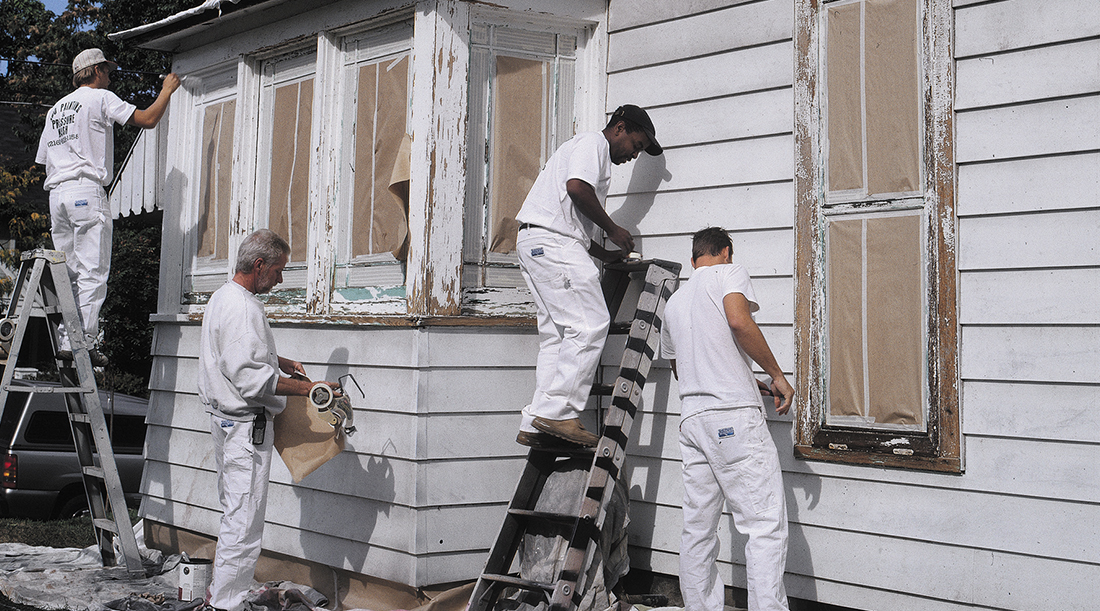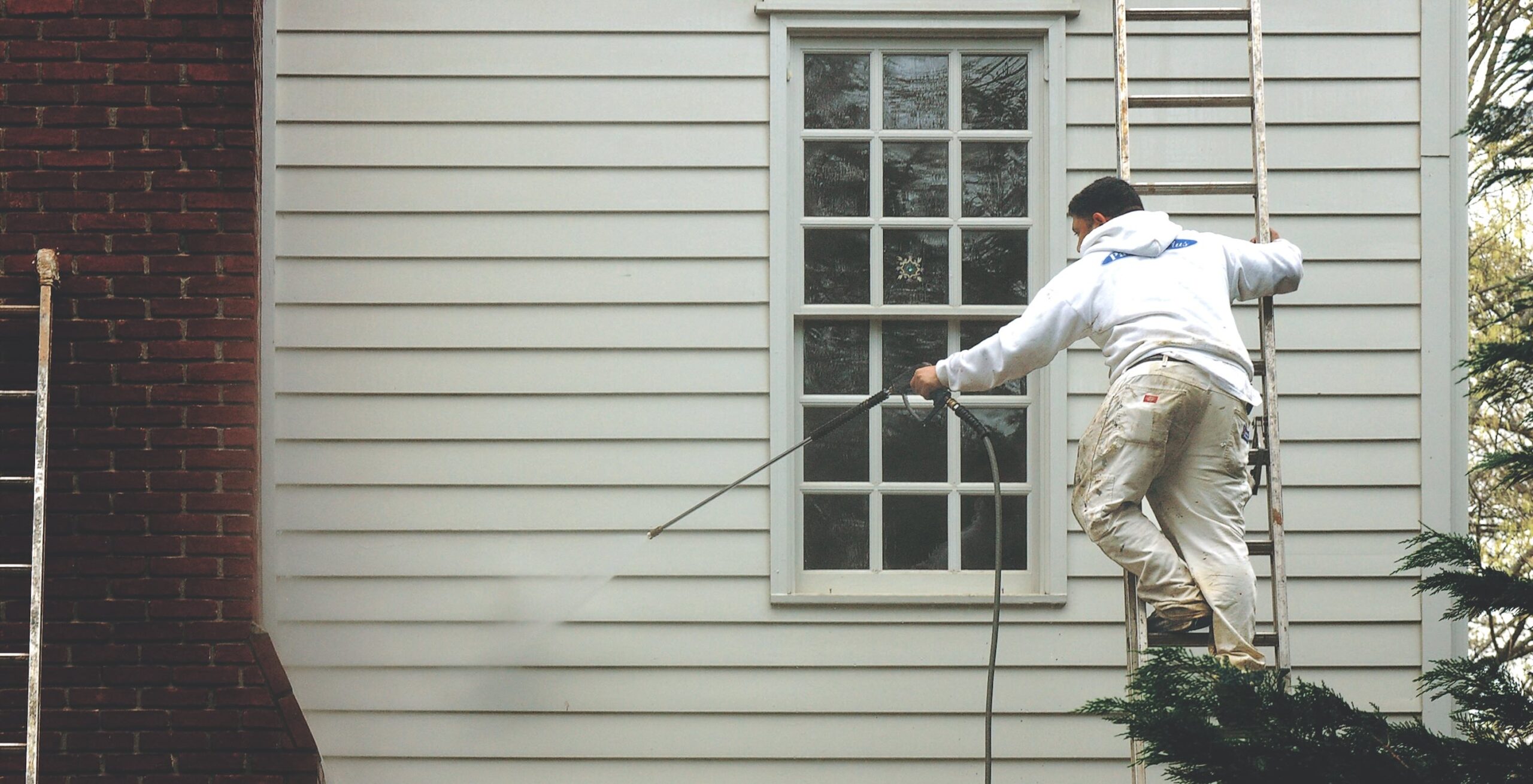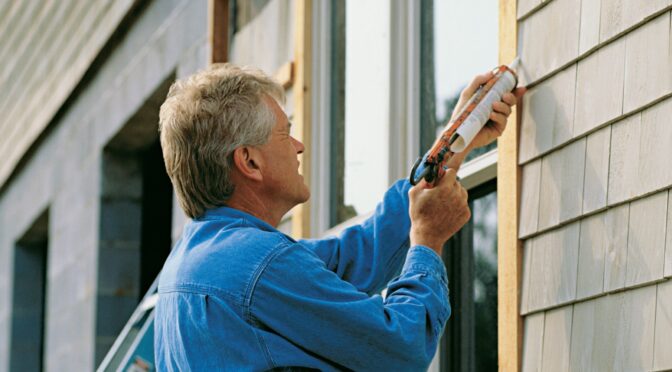Preparing the surface properly is crucial when painting and staining exteriors. Here are some of the questions we hear most often from painting contractors.
I hear conflicting advice for painting exterior wood. Some recommend caulking to keep moisture out of the wood. Others say to leave gaps to allow the house to breathe. Which is right?
Both methods are correct. Since moisture is the culprit in many cases of exterior peeling, it’s important to use a good quality acrylic caulk to fill gaps around windows and doors, joints in siding and trim boards, and anywhere moisture could get into the end-grain wood.
However, you also need to make sure that moisture generated inside the house has a way to escape. The best way to allow a house to breathe is with gable, roof, and eave vents.
If you are correcting an existing moisture-related peeling problem, you may also need to install siding wedges or vents to give the moisture an easier path of escape than through the paint film. It’s not advisable to caulk where the siding overlaps, as it could trap moisture behind the paint, causing it to peel.

I need to repaint an old house with peeling issues. Any advice?
Our recommendation: First, remove as much paint as possible by scraping, sanding or other appropriate means. Test the coating surrounding any peeled areas out about six to 12 inches to be sure the adhesion is adequate. Recognize that any surface preparation short of total removal of the old coating may compromise the service length of the new system.
Next, prime the bare surface with the appropriate primer and caulk where necessary (especially at angles and crevices) to eliminate any opportunity for moisture to penetrate into the substrate.
Clean and repair gutters so they properly channel water away from the house. Install vents, louvers, fans and dehumidifiers to relieve moisture, especially in the kitchen, bathroom, and laundry area. Siding wedges can be installed to allow the moisture to escape between the boards instead of through them.
If wood siding is touching the ground, remove that portion of the wood. Siding should come down no further than six inches above the ground. If a wood surface is deteriorated, replace it using cedar, redwood or pressure-treated wood.
Prime the butt ends of the wood before installation to reduce moisture penetration. Follow label and data page directions for proper surface preparation and environmental conditions. Be sure the surface is dry prior to painting.
One point to keep in mind: The coatings you apply over the old wood and coatings are only as good as the existing substrate. Painting over gray deteriorated wood will always result in peeling eventually. Without the total removal of the existing coatings or even substrates, you will always have to play catch-up.

How long do I need to wait to paint an exterior after pressure washing?
Depending on the substrate and weather, you may need to allow at least 48 hours of drying before priming or topcoating.
Lower temperatures, high humidity and porous surfaces may need longer to dry out before painting.
If the humidity remains high (such as 90 percent) or it has rained, you may need to wait longer.
What types of cleaners can I use to remove mildew?
Try using a solution of one quart household bleach in three quarts of water. Apply the solution to the area with mildew and then rinse off with water. Never add detergents or ammonia to the bleach/water solution. Always protect your skin and eyes against splashes. As an alternative, you could also use an exterior mildew house cleaner.
Can mildew be permanently prevented?
No. Although using paints formulated to inhibit the growth of mildew can help prevent regrowth, without proper maintenance the mildew may reappear.
How do I find out if the paint on a house exterior is latex or oil? Is there a quick test?
If the old paint is peeling, take a good size piece of the peeling paint and hold the edges of it between your thumb and index finger. Exert pressure on both sides of the chip. If it is very flexible and bends easily, it is probably latex.
If it is hard, brittle and breaks instead of bending, it is most likely oil-based paint.
Another way to test the paint is to wet a rag with denatured alcohol and rub the surface of the paint. If the paint softens or rubs off, it is most likely latex. An alcohol test usually will not affect an oil-based paint.
What causes reddish colored stains on cedar and redwood?
The culprit here is a water-soluble dye called tannin. Moisture in the wood will cause the tannin to migrate to the surface and stain the paint.
New red-colored wood must be sealed with a quality alkyd or latex undercoater to create a barrier between the topcoat and the wood.
More severe cases of tannin bleed may need one or two coats of an alkyd primer to prevent discoloration.
What causes white powdery deposits on masonry surfaces, and how can I fix them?
The deposits, known as efflorescence, are caused by moisture in the masonry. The moisture dissolves salts in the masonry – the mortar, block, concrete, etc. – and is drawn to the surface by the heat of the sun. The water evaporates, leaving behind white deposits that must be removed before painting. After you find and fix the source of the moisture, remove the efflorescence with a wire brush and coat the surface with a masonry primer and topcoat.
GOT MORE QUESTIONS? We have the answers to more frequently asked painting questions in our digital archive
Warning! Read this before you prep
Removal of old paint by sanding, scraping or other means may generate dust or fumes that contain lead. Exposure to lead dust or fumes may cause brain damage or other adverse health effects, especially in children or pregnant women. Controlling exposure to lead or other hazardous substances requires the use of proper protective equipment, such as a properly fitted respirator (NIOSH approved) and proper containment and cleanup. For more information, call the National Lead Information Center at 1-800-424-LEAD (in US) or contact your local health authority.
This article was originally published in the Spring 2025 issue of PPC/Pintor Pro magazine. Peeling paint and pressure washing photography by PPC/Pintor Pro Editor Mike Starling. Caulking photo courtesy Sherwin-Williams. ©2025 Fusable.




